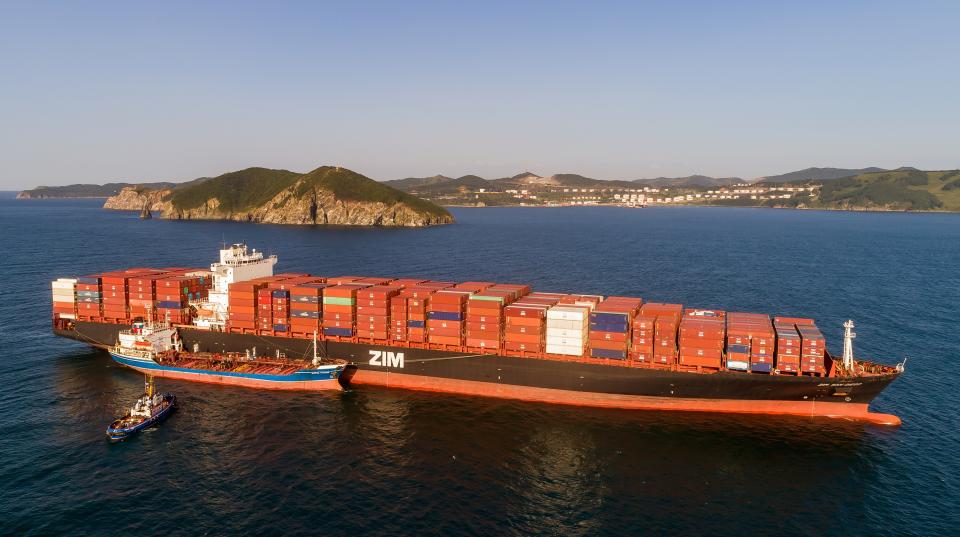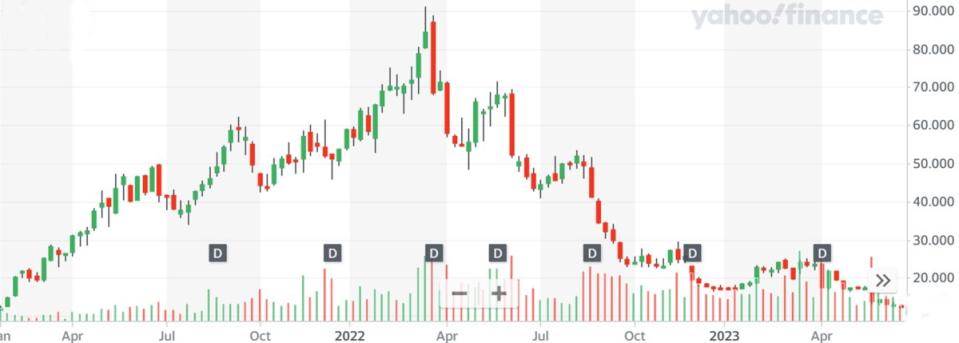
Container lines face a triple problem: Freight rates are weak — below breakeven in some trades — and showing no signs of picking up. New ships flood the market. And ship leases, which container lines booked at historically high rates during the boom, have not yet expired. Some leases run until 2024 or 2025.
What levers can shipping companies use to stop the bleeding?
They don’t seem to be able to increase freight rates. Demand is too low and airlines are not canceling enough departures. They want the new ships to be delivered (regardless of whether they are owned or leased) because the bottom line is that they benefit from much higher fuel efficiency. Aristides Pittas, CEO of ship rental company Euroseas (NASDAQ:ESEA), said during the recent Marine Money Week conference that his company’s newbuilds “use 40% less fuel oil than comparable ships built 10 years ago.”
What remains are the long-term leases for older ships. Losses from these contracts can be mitigated.
Reports: Zim seeks early termination of charter
Israel-based Zim (NYSE: ZIM) is the poster child of this trilemma. The company faces sharply falling freight rates, particularly in the East Coast market between Asia and the US. The company has an extensive backlog of new builds and these ships are already on the water. At the same time, the company is more exposed to charter costs than any other shipping company as over 90% of its fleet is chartered and not owned.
According to several reports, Zim is now trying to reduce its old charter liabilities.
“Zim has requested the termination of several chartered vessels,” Linerlytica said. Tradewinds, citing brokers, said the airline “intends to terminate or even sub-lease some charter contracts for traditional Panamax container ships.” Alphaliner wrote, “Rumour has it that Zim is making some of the tonnage available through sub-leasing or earlier than expected backsupply.”
Without naming the shipowner(s) involved, shipbroker Braemar said that “excess tonnage is now being marketed and some vessels are becoming available sooner than previous charter commitments had anticipated.”
FreightWaves made several requests for comment on these reports to Zim’s media and investor relations teams, but they did not respond.
Freight rates drop again
In the second half of April there was a brief period of optimism in spot freight rates and it felt like they had finally bottomed out. Then interest rates started falling again.
For the week ended May 4, the global spot composite value of the Drewry World Container Index (WCI) is down 15% to just $1,494 per 40-foot-equivalent unit in the week ended Thursday. Since June 8, the WCI Shanghai-Los Angeles spot index is down 21% to $1,581 per FEU. The WCI Shanghai-New York Spot Index fell 16% to $2,508 per FEU over the same period.
The global spot composite index Freightos Baltic Daily Index (FBX) fell 7% to $1,288 per FEU between June 6 and Thursday.
FBX China-West Coast valuation fell 17% to $1,190 per FEU over the same period, while FBX China-East Coast spot valuation fell 9% to $2,226 per FEU.

The development is also negative for contract rates, which are more important for line revenue than spot rates. Xeneta’s global index, which measures contract rates, fell 9.4% in June from May and is down 51.7% year-to-date. The XSI sub-index for US import contract rates fell 11% in June from May.
“One wonders where this is all going to end,” said Patrik Berglund, CEO of Xeneta.
Jefferies downgrades Zim’s earnings outlook
“Liners have limited pricing power and spot prices remain very low on most routes,” said Omar Nokta, shipping analyst at Jefferies, in a report released on Tuesday, lowering his earnings outlook for Zim.
Nokta previously forecast that Zim would post a net loss of $183.7 million this year and $87.3 million next year. On Tuesday, his Zim loss expectations for 2023-2024 increased by 150%. He now forecasts a net loss for Zim of $353.7 million this year and $324.7 million next year. He also presented his outlook for 2025 and forecast another net loss of $150.8 million for the shipping company.
As the consumer boom hit new heights in the COVID-era, investors reaped huge returns from their Zim stocks, but timing was everything. The stock peaked in mid-March 2022. Since then it has fallen by 87%.
Zim’s shares fell intermittently on Tuesday to $11.78 per share, just a few cents above the all-time low hit on the first day of trading after the IPO in late January 2021.

Like all major shipping companies, Zim is far from in dire straits and still has plenty of cash during the boom: $3.5 billion at the end of the first quarter, pro forma of April’s dividend payout.
However, it burns through this pillow. As freight rates remain below breakeven and Zim’s newbuilds come into service, it would make sense to proactively limit losses from high-priced legacy charters.
Nokta estimates that Zim’s current quarterly cash burn is $250 million, or $1 billion per year on an annualized basis. It’s “not ideal, of course, but Zim has ample liquidity and headroom to weather the current extreme weakness in the spot market,” he said.
Click here for more articles by Greg Miller
Related articles:
The article Container shipping trilemma: weak tariffs, new ships, expensive charters appeared first on FreightWaves.